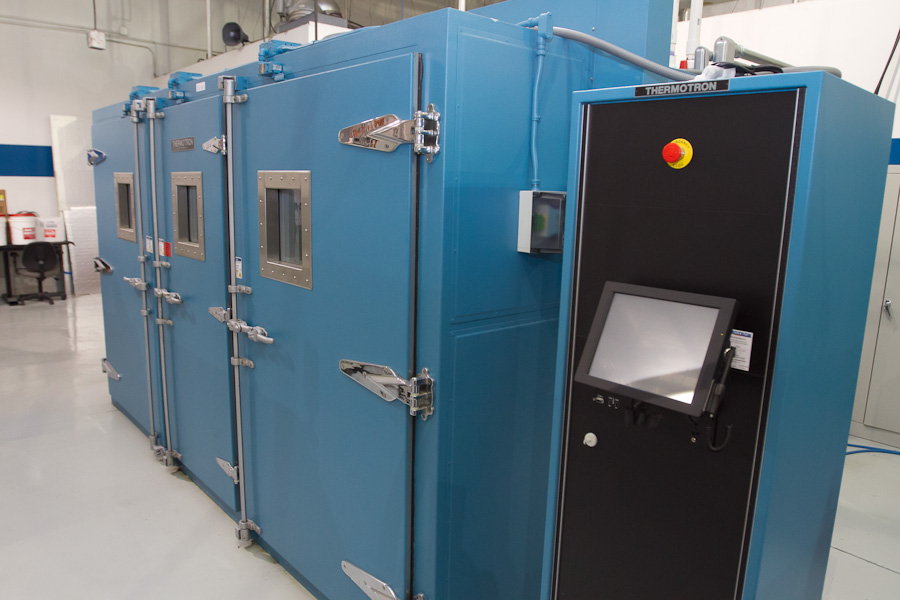

The ability to withstand sudden temperature changes is an important feature for products and components that are exposed to harsh environmental conditions or used in other demanding applications. EUROLAB helps you deliver a more reliable end product and maintain compliance with MIL-STD-810 and other standards by offering various protocols to test components against the effects of thermal shock.

Thermal shock testis at the most severe end of the scale in the temperature tests group. Thermal shock corresponds to a very high temperature change, typically 30 ° C or higher per minute, and is suitable for testing packaging, aircraft parts, military equipment, or electronic devices designed for extreme duty. As almost all products are subject to shipment, this test may be suitable for any part that needs to withstand a sudden temperature change in a short time, such as a truck during a transition from a hot warehouse to a frozen roadside.
Most test substances are subjected to air-to-air thermal shock testing, where the test product passes from one extreme atmospheric temperature to another in a mechanical way. EUROLAB uses a series of vertical two-zone thermal shock chambers where an elevator moves small and medium-sized parts from one end to another almost instantly. Fully enclosed thermal shock test chambers prevent unwanted exposure to ambient temperature and help prevent hazards of use.
Highly Accelerated Thermal Shock test - that is, HATS technology uses high speed air as the heat transfer mechanism to heat and cool test materials, as well as air, transfer fluids such as oil, nitrogen, sand or internal conduction can be used. These different methodologies can cause different heat transfer rates.
In addition to air-to-air thermal shock testing, there are several other methods to meet the needs of specific products and devices:
For higher thermal transfer rate of larger thermal energy, EUROLAB can use a liquid-liquid system. The process works essentially the same as air-to-air thermal shock using a basket to mechanically transfer the test product from one boiler to another.
As a special type of thermal shock, EUROLAB also performs a cryogenic test for launch vehicles, satellites and related equipment. There are two large capacity LN2 pits for testing, requiring simple atmospheric or high pressure lower freezing temperature shock.
As military test standards turn into commercial applications, the temperature of the test load itself (not just the air temperature in the chamber) should be balanced at extreme temperatures. EUROLAB uses thermocouples for recording and documenting test items (centers) and their temperatures in each corner. Both wetting and transfer times are recorded in accordance with test requirements.
To get an appointment, to get more detailed information or to request an evaluation, you can ask us to fill in our form and reach you.